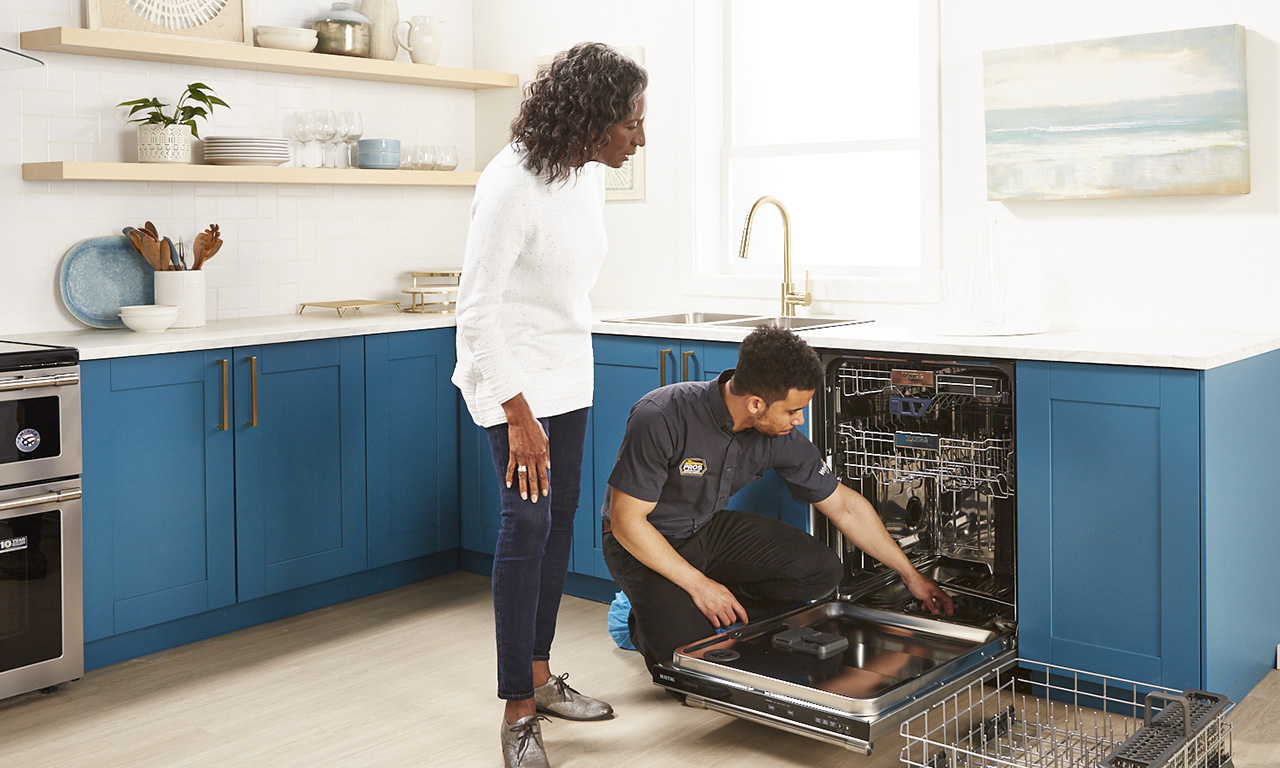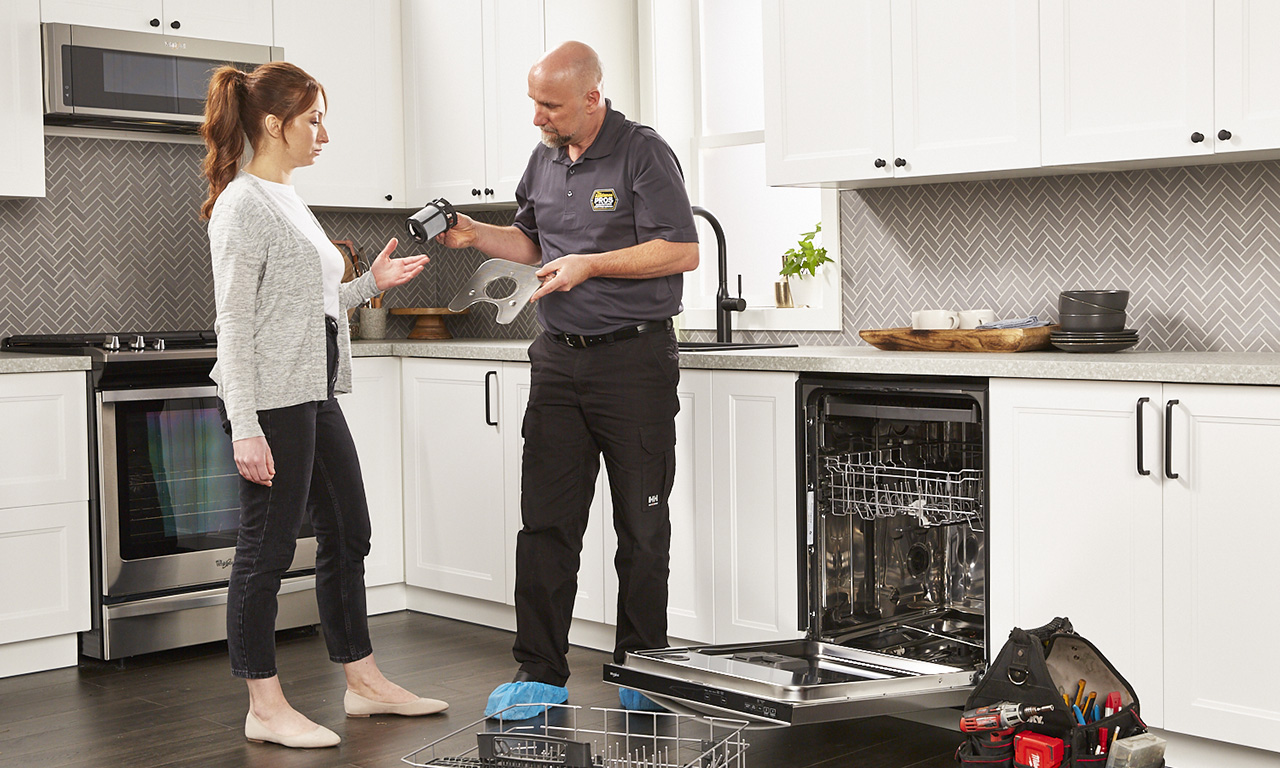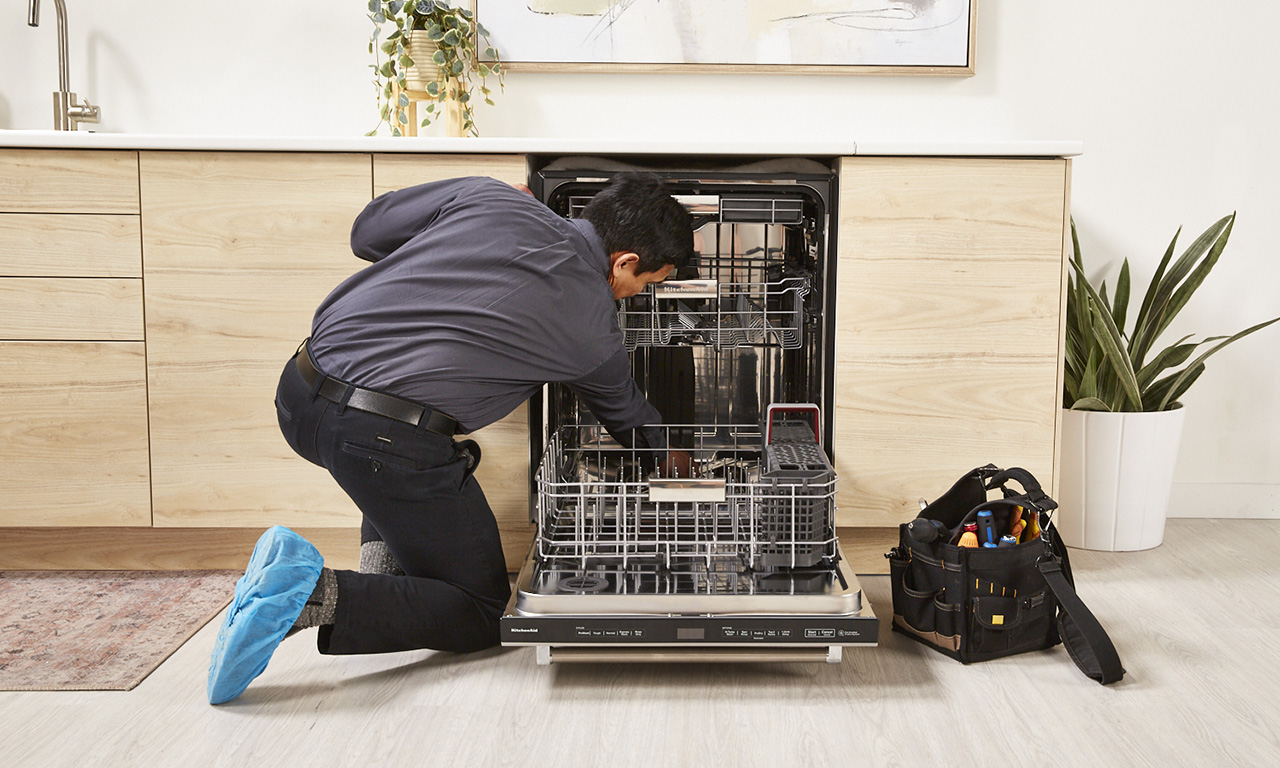What are some of the signs that your dishwasher is clogged? If the dishwasher is not draining or cleaning very well, or if it consistently accumulates water at least an inch deep at the bottom, it is likely clogged.
If you’ve noticed these signs, it’s time to take action. Below are some guidelines to help. You can also look into a dishwasher repair service.

Dishwasher Won’t Drain: Troubleshooting Tips
These five dishwasher troubleshooting tips can help you find and resolve a clogged dishwasher.
Clean the Interior:
Your dishwasher accumulates grease, food particles, mineral deposits from hard water, soap scum, etc. Cleaning your dishwasher’s interior is a good first step if it’s not cleaning dishes. You can run a vinegar cycle if there is a minor buildup: Pour 3 cups of white vinegar in the bottom and run a full cycle. Another easy option that we recommend is affresh® Dishwasher Tablets.
Clean the Dishwasher Filter:
Dishwashers generally have removable filters that need to be cleaned periodically. There is usually a twist-off cap covering the filter, which is underneath the racks. You can clean the filter by removing it from the machine and rinsing it thoroughly under hot water (as per the owner’s manual instructions). Rinse the area with warm, soapy water and gently scrub off any remaining residue.

Inspect for Water Volume or Pressure Issues
Appliances like dishwashers and washing machines may be impacted by water pressure. When you’ve noticed that your faucets aren’t flowing as they used to, or the pressure fluctuates, this may indicate water pressure problems. For this issue, we recommend contacting our Certified Service Technicians.
Check the Soap Dispenser:
During the wash cycle, a malfunctioning soap dispenser may not send enough detergent to your dishes or may not release it at the right time. Often it is caused by a jammed spring. You can clean the springs and dispenser with a small brush. Combine hot water and vinegar to dissolve grease. When the dispenser spring or door is broken, it should be replaced. In addition, check the gasket around the dispenser, and replace it if it’s cracked. A small dab of petroleum jelly applied to the gasket can extend its life.
Check the Water Temperature:
In order for dishwasher cycles to work properly, the water temperature must be at least 120 degrees Fahrenheit/48.8°C. Some models come with a heat-boosting feature, but if yours doesn’t, set your water heater to 120 degrees Fahrenheit. Lastly, turn the kitchen faucet on for 30-60 seconds before starting the dishwasher. Hot water will be drawn into the unit.
Book Your Dishwasher Repair
Are you still having trouble with your dishwasher? Schedule Service Online with Appliance Pros+.





